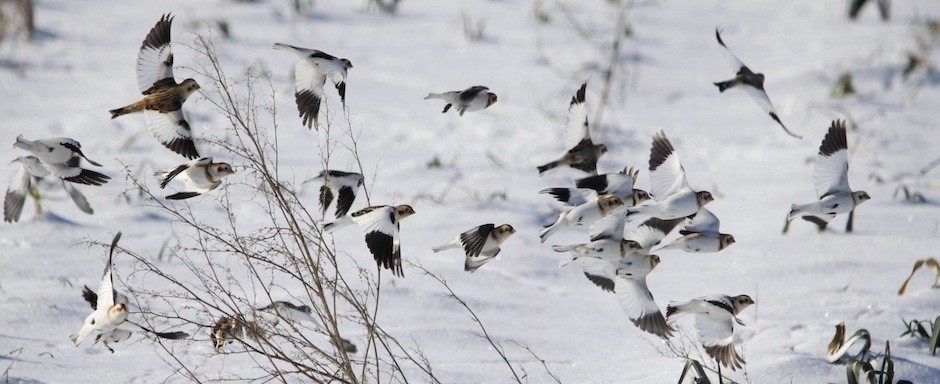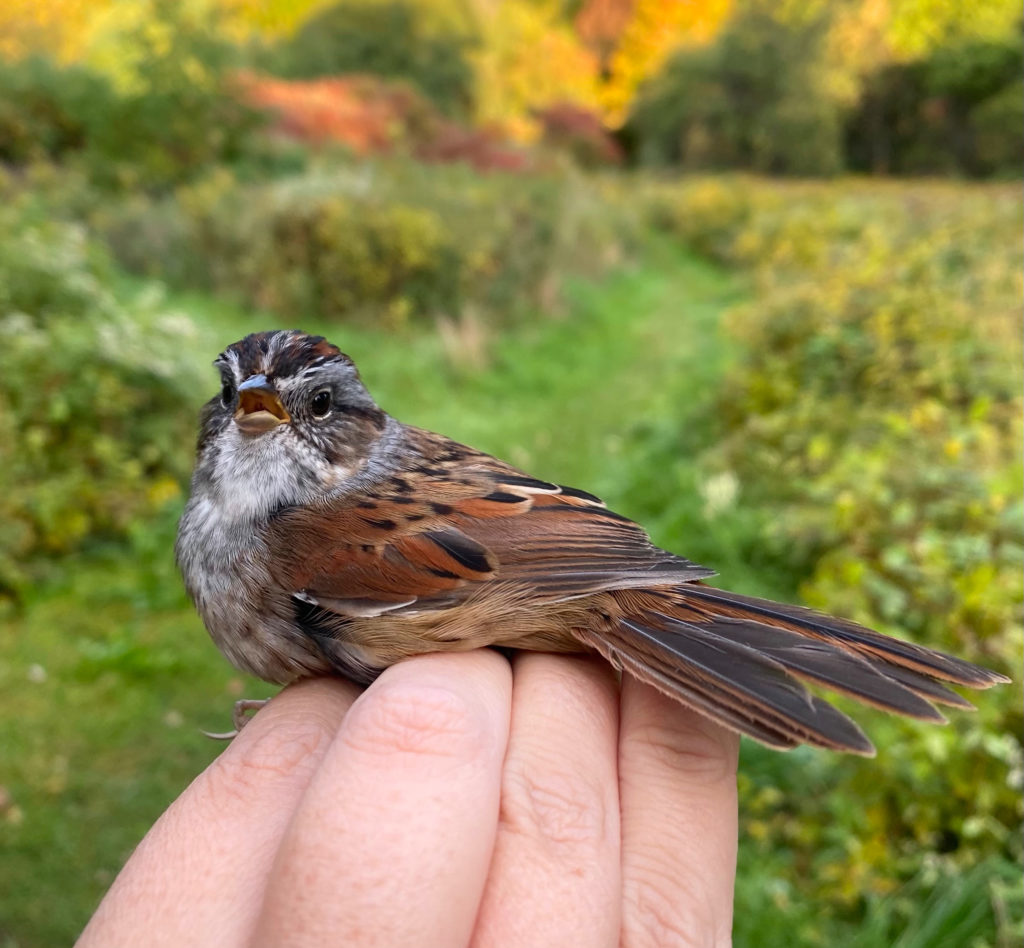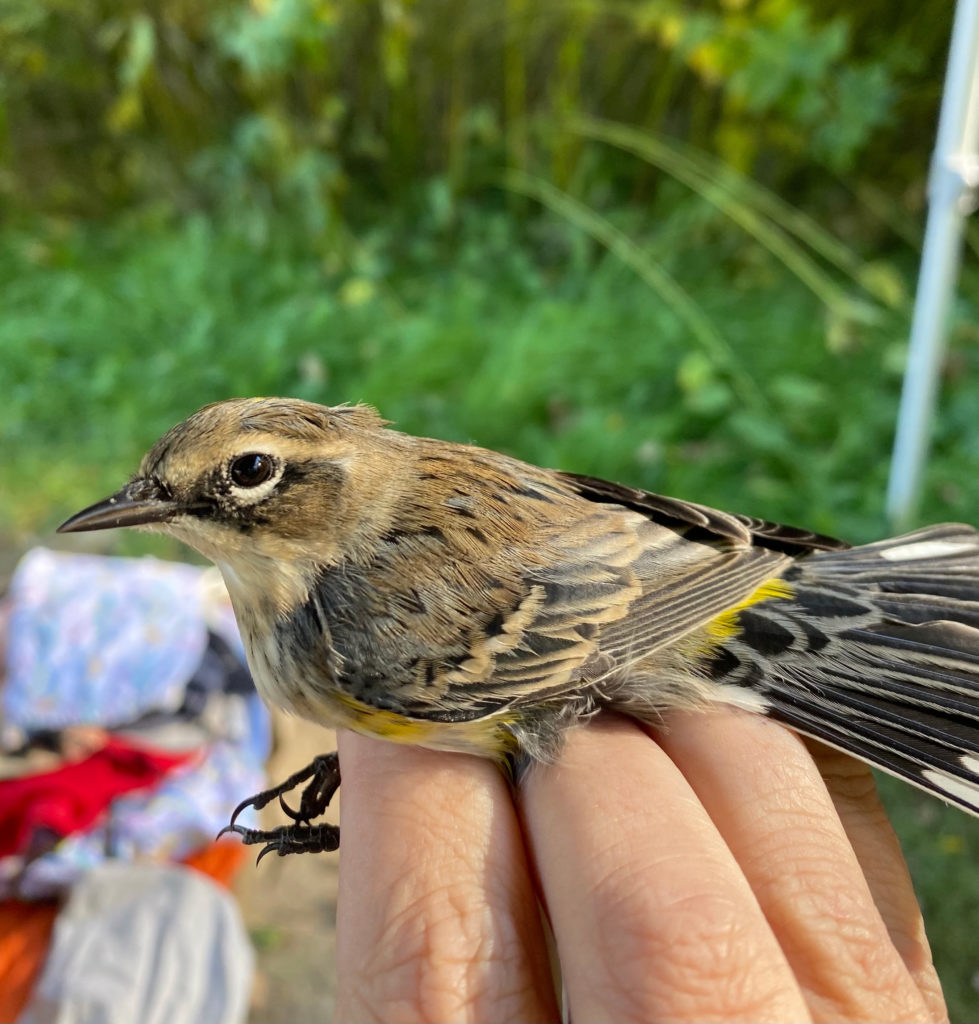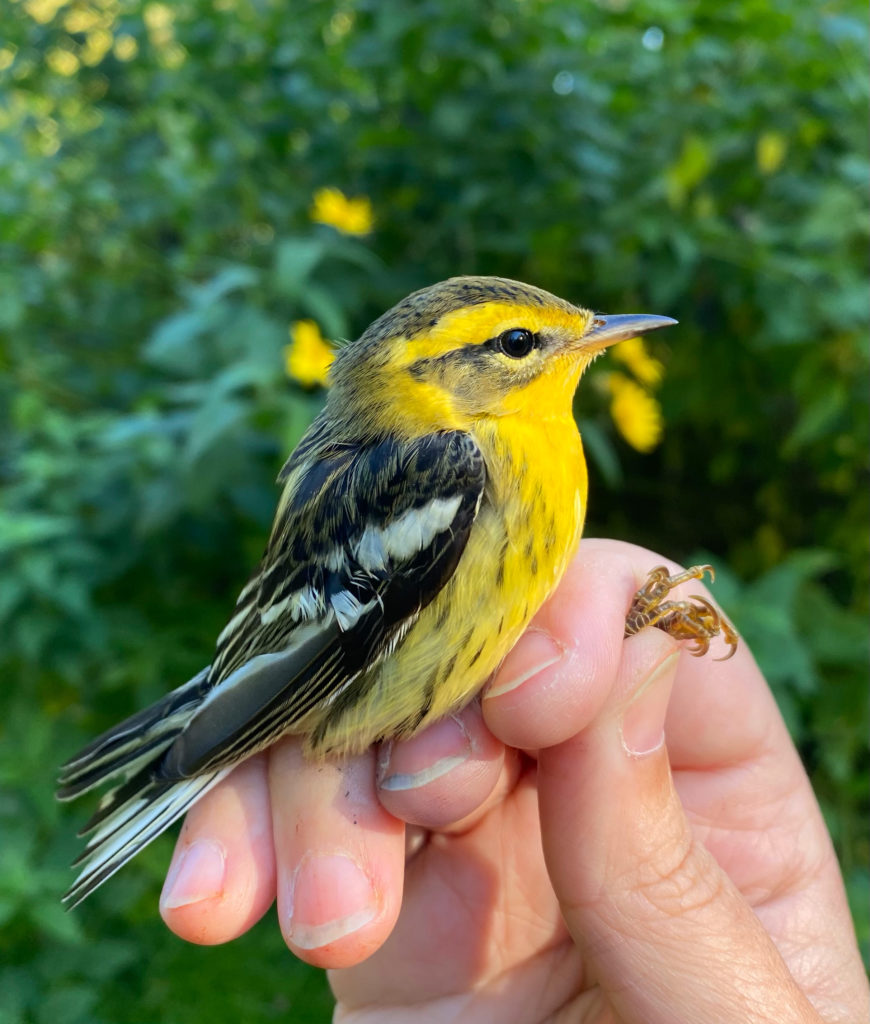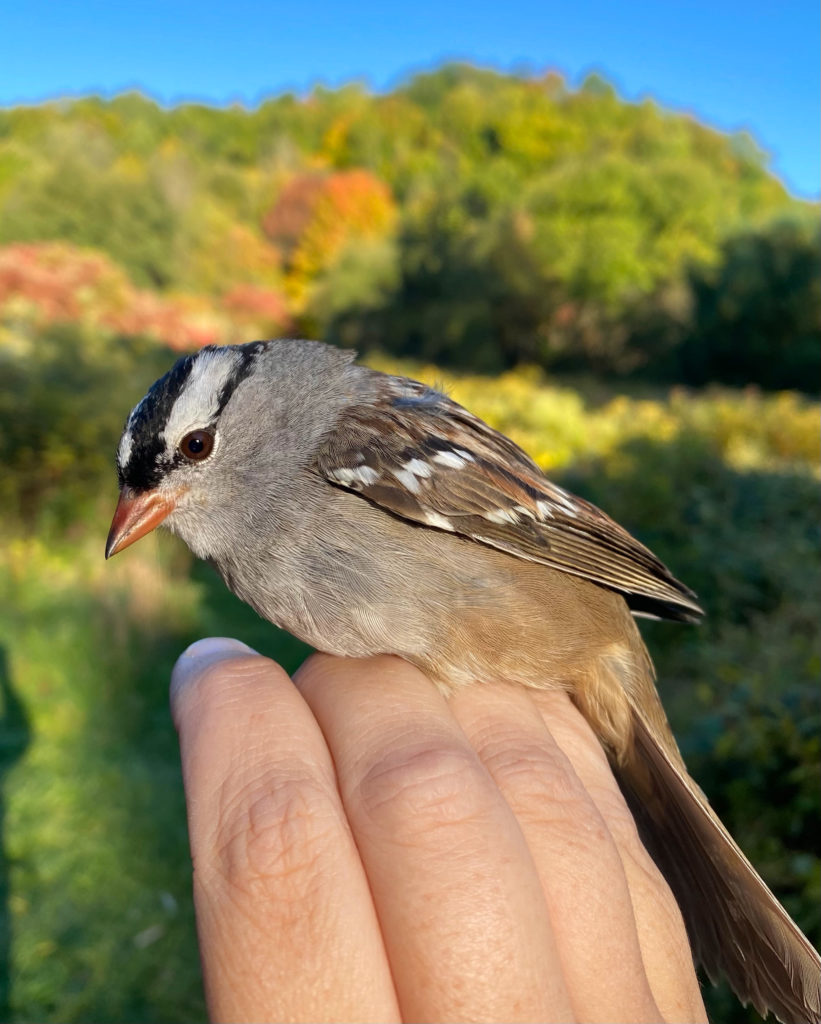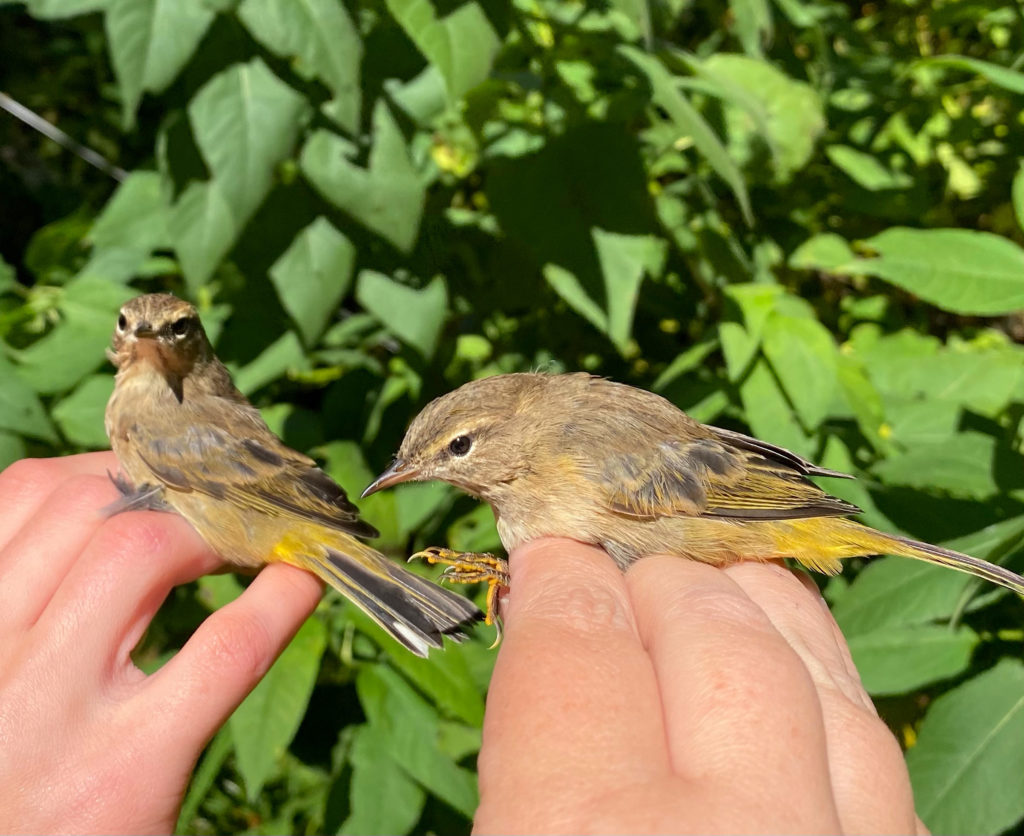Oct. 2, 2022 – Lowville
October 2nd was definitely a day for the books, and certainly not one I’ll soon forget. This is both because it was a fantastic day of banding, and also because today’s numbers were a first for the Lowville site. The number of birds banded for the day broke triple digits, which has never happened at this site before! I was joined by Sarah, and I must say I was very happy to have her help because it was quite busy. The area we call ‘the meadow’ was alive with birds from before the sun had risen until after we closed nets. The most unusual thing though, was the sheer number of Myrtle Warblers. They seemed to be everywhere, and we had at least a few of them in the nets every single time we checked. At some sites, it is not that unusual to band large numbers of Myrtles during migration, but for whatever reason, the Lowville site has never caught more than a handful of this species in day. There were probably a couple hundred of them at the site, and we ended the day with 46 Myrtle Warblers banded!
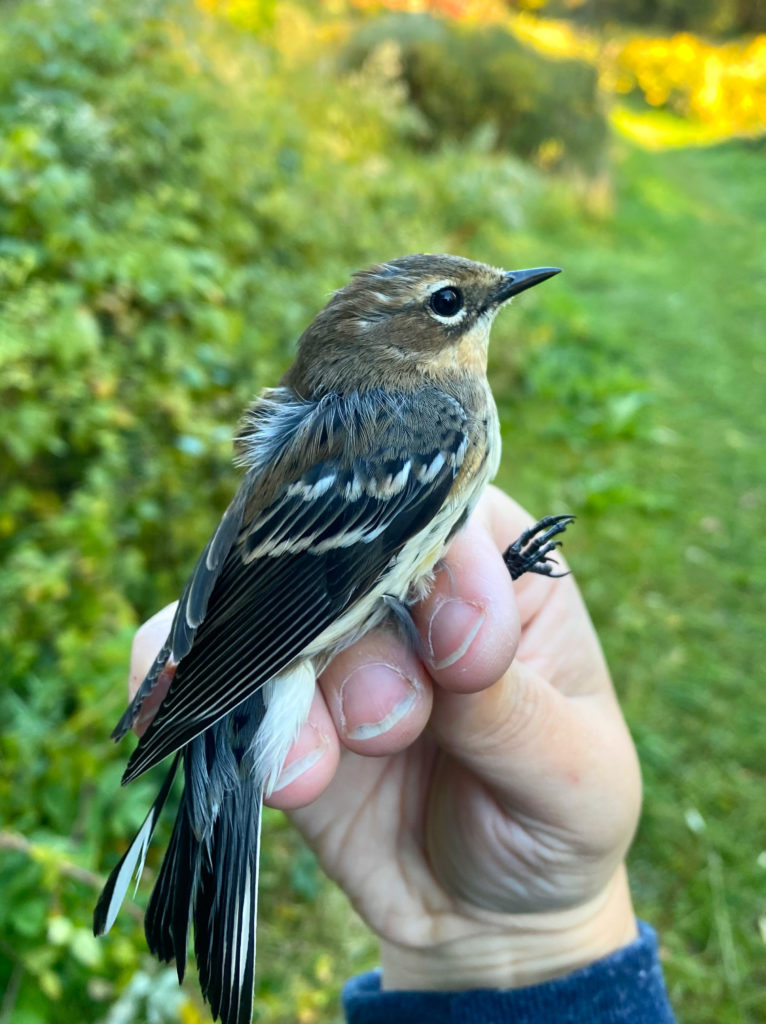
Myrtle Warbler – this is the eastern subspecies of the Yellow-rumped Warbler, and they are so named because they are one of very few birds that can readily eat Myrtle berries
I do suspect something more than just good north winds precipitated this large number of birds (in particular MYWA), and while I can’t say for sure, I do have some thoughts. On the night of Oct. 1-2, the massive storm that was the remnants of hurricane Ian sat just southeast of Lake Erie. It’s very possible that this enormous weather system acted as a barrier for migrants that normally would’ve headed towards the east coast, and therefore pushed many birds onto a slightly more westerly route that skirted around the storm and through the Great Lakes region. You can see something resembling this pattern of nocturnal bird migration on the US weather radar for the night (see birdcast.info), with large numbers of migrants detected all over the east except in the area of the Atlantic US states where the storm was. The other possibility is that it’s just down to sheer chance that a large flock of Myrtles (and other species) descended onto the Lowville site that morning just because it’s the green patch they were closest to at dawn. Being an inland site in southern Ontario means that there are no geographic features (like a large body of water or mountain range) to encourage the birds to stop at our site, so large numbers of migrants are usually down to either weather conditions or just random chance. I will say, if I had to speculate, that this is a ‘a little of column A, a little of column B’ scenario. Whatever the reason, we were beyond pleased to see so many migrants today. Full banding list is below.
We ended the day with 107 birds banded which is the first time we’ve hit 100 birds banded in a day at this site (for now anyways), and I was felt lucky to get to be there for it. I know excitement may not come through very well in a typed blog post, but I was thrilled with how the day turned out. I really should’ve taken a picture of Sarah with bird bags loaded on her arm, but sometimes when you’re busy you just don’t think of these things!
Banded:
8 Ruby-crowned Kinglet
2 Golden-crowned Kinglet
1 Orange-crowned Warbler
7 Nashville Warbler
1 Blackburnian Warbler
3 Tennessee Warbler
1 Common Yellowthroat
46 Myrtle warbler
2 Western-Palm Warbler
2 Black-capped Chickadee
1 White-breasted Nuthatch
2 Hermit Thrush
8 Slate-colored Junco
2 Swamp Sparrow
5 Song Sparrow
2 White-crowned Sparrow
11 White-throated Sparrow
3 Blue Jay
Recaps:
2 Common Yellowthroat
1 Gray Catbird
1 Hermit Thrush
1 Song Sparrow
1 Black-billed Cuckoo
107 banded (whoo hoo!) + 6 recaps
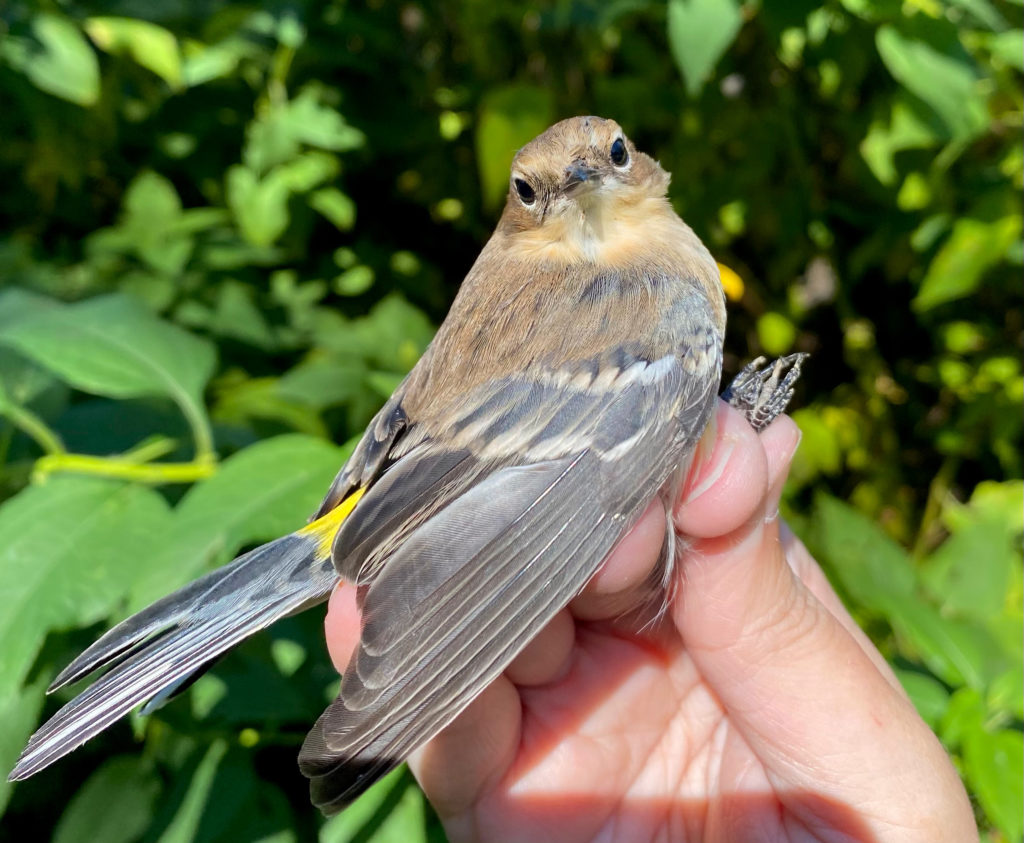
One last shot of the species of the day.. this shot shows off their namesake yellow rump (aka butter-butt)
~Ashley
Resources: see birdcast.info to view migration radar maps for the night of Oct. 1 (or any night for that matter)
